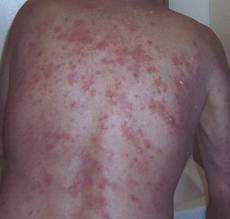Chloramine widely used to treat water pollution

Chloramines are widely used by municipal water facilities to disinfect water, but the byproducts of chloramine treatment may make water pollution worse! Some water treatment facilities have switched to alternative methods such UV light disinfection because of this.
Chloramine is created by combining chlorine and ammonia, water treatment facilities often refer to this combination as monochloramine. Two other forms of chloramine are created when chloramine breaks down in water, dichloramine and trichloramine. Additionally when chloramines break down organic matter (such as bacteria), extremely toxic byproducts are formed.
Chloramines make water pollution worse
Chloramine and its byproducts become vapors which accumulate in indoor air. Health experts state that the most significant exposure to chloramines is during a shower, because since the vapors build up quickly in small, enclosed spaces. Research has also demonstrated that chloramines are corrosive to plumbing, and will leech heavy metals like lead and copper out of plumbing fixtures. Chloramines are also corrosive to plastic and rubber plumbing components as well.
Recent studies conducted by the EPA indicate that the byproducts of chloramines in our water may be even worse than the water pollution the chloramine is intended to treat! Byproducts such as Iodoacetic Acid, Hydrazine and Nitrosamines are known to be potent carcinogens and mutagens, so these chemicals will cause both cancer and birth defects. Dichloramine and trichloramine are formed as chloramine decays, and both are significantly more toxic than chloramine itself!
Chloramine water pollution a nationwide problem
Practically all drinking water in the US contains some level of chloramines, and research suggests that there is no “safe” level of chloramine! Municipal water authorities continue to add it to drinking water supplies due to a lack of feasible alternatives. Chloramine has replaced chlorine as a preferred water pollution treatment because it remains in water longer than chlorine, thus offering longer-term protection against bacteria. Many communities are beginning to call upon their municipal treatment facilities to stop using chloramine to treat their water, but most water authorities cite a lack of resources as preventing them from switching to safer alternatives.
How Chloramine Water Pollution will kill you
Short term exposure to high enough levels of chloramine in tap water causes difficulty in breathing and skin rashes. Damage to the respiratory system from chloramine is likely to be permanent, if you experience any of the following symptoms from contact with your water, you should seek medical help immediately to determine if you have been poisoned:
- Wheezing, Shortness of Breath
- Coughing, Choking
- Eye Irritation
- Sinus Congestion
Chloramines are especially lethal to people with asthma because of the irritation to the lungs they cause.
Long term exposure to even small amounts of chloramines and their byproducts have been linked to respiratory illnesses like asthma, gastrointestinal problems, and several forms of cancer. People with liver or kidney problems are highly susceptible to ammonia toxicity if they are exposed to even tiny amounts of chloramines. Children living in homes with chloramine-tainted water are at elevated risk for lead poisoning due to chloramines’ corrosive effects on plumbing fixtures.
Most Conventional Filters are Ineffective
Most conventional home water treatment systems (such as water softeners) are completely ineffective against chloramines. Advanced treatment technology is a must if chloramine contamination is to be effectively stopped before it can harm you or your loved ones.
Life Ionizers™ offers advanced treatment in its Dolphin Whole Home Filtration™ system, or in the Life Super Filter™ replacement filter which is designed as a replacement for the inadequate filters provided in most existing home filtration systems. Life’s filtration is more effective against chloramines than conventional treatment systems because of the ion-trapping effect of Life’s exclusive Charged Modified Composite Blend® filter media. Ion-trapping uses an electrostatic charge to bind pollutants like chloramines within the filter, preventing them from escaping into the home. Life also offers a Catalytic Granular Activated Carbon Cartridge for drinking water systems that is designed to target chloramines exclusively. All Life water ionizers come standard with filtration that is highly effective against chloramines as well.
1 comment